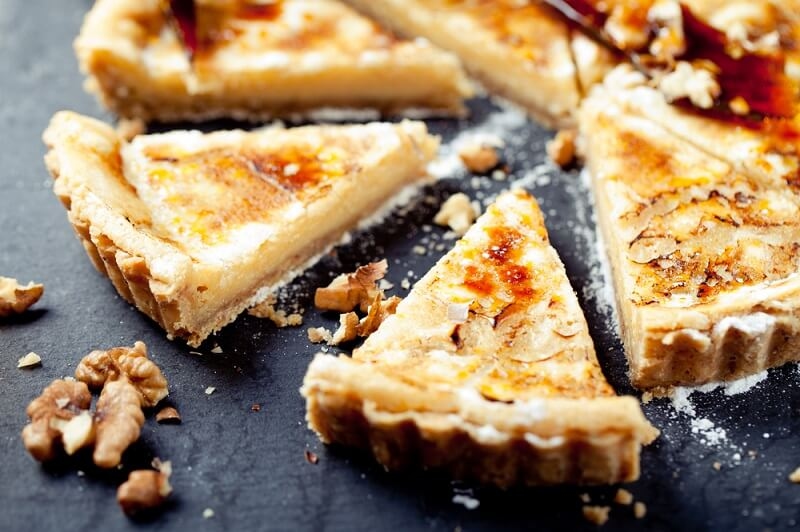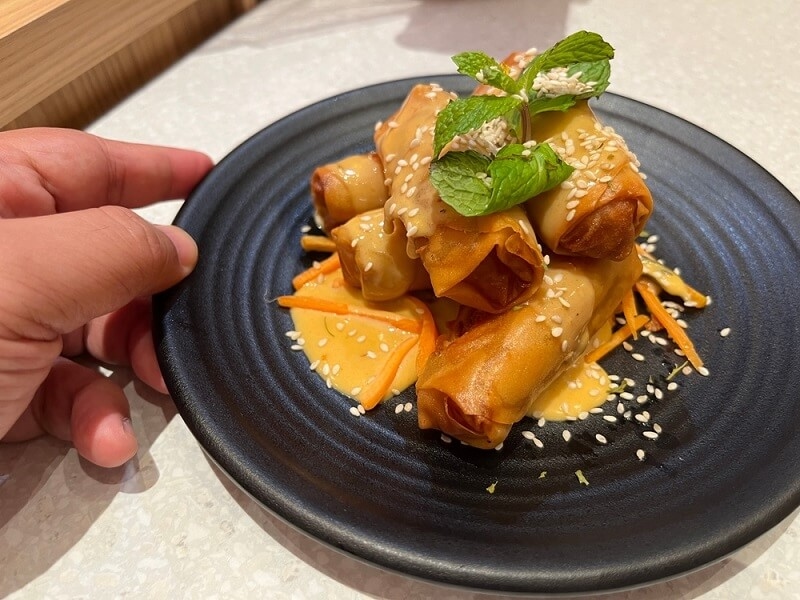Maple Buttermilk Custard Pie for a Timeless Dessert

There is something magical about a pie that is so modest yet so lovely. It is a dessert that doesn't require extravagant garnishes or elaborate techniques to win your heart. The pie relies on the effortless alignment of just a few simple ingredients. This is the world of the maple buttermilk custard pie. A cousin of the very old-fashioned buttermilk pie recipe substitutes simple sugar for the deep, woody sweetness of pure maple syrup. A maple custard pie results in an impossibly plush, tangy, and creamy custard dessert. It is like a slice of happiness that tastes like waking up from a warm hug, both familiar and new.
The Humble Origins of a Maple Buttermilk Custard Pie
To fully appreciate the origins of a maple buttermilk custard pie, it's helpful to go back to buttermilk pie itself. Buttermilk pie is a classic Southern and Midwestern dish, built out of frugality and resourcefulness, dating back to early settlers who could not afford luxury ingredients. Because early American settlers often used what they had every day: eggs from the coop, butter from the churn, and buttermilk (which was a byproduct of making butter and too valuable to throw away). Buttermilk, sugar, and eggs were a simple family combination, baked until they formed a custard. An evolved recipe incorporating maple syrup into the traditional buttermilk pie recipe makes perfect sense, as many North Americans use maple syrup as their primary sweetener. While this pie is a leap back into the past, the flavor profile is perfectly contemporary.
Why This Maple Buttermilk Custard Pie Recipe Works
The beauty of this pie is its perfect equilibrium. Each ingredient performs its separate work in creating this final, delightful texture and flavor.
- Buttermilk: This is the star ingredient, which adds a refreshing acidity that cuts through the sweetness and adds incredible depth to layers of flavor. Because buttermilk is acidic, it will also react with the baking soda, if you are using it, to create a custard that is very tender and slightly lifted as it bakes.
- Pure Maple Syrup: Beyond acting as a sweetener, maple syrup provides warm notes of vanilla and toffee that taste caramel-esque. It is the key that gives the maple custard its particular fall flavor. Please stay away from imitation syrups, as they are void of much flavor, and the possibility of sweetness becomes too pronounced.
- Eggs: The eggs are the glue to the custard, adding the necessary structure and providing the silky, rich creaminess that eggs lend while baking.
- Butter: To provide fat and flavor, butter adds a rich mouthfeel to the filling, along with a nice, smooth, and silky finish.
Once the egg, buttermilk, maple syrup, and butter are whisked together and baked into a custard pie, they become a minor miracle of a dessert as the mixture goes from a thin liquid to a set, jiggle-able, and super smooth creamy custard.
Also Read: 10 Quick & Easy No-Bake Pies Recipes That Anyone Can Make
Gathering Your Ingredients for Success
A delicious pie begins with high-quality ingredients. Here is what you need to make this incredible dessert:
For the Pie Crust:
- 1 unbaked 9-inch pie crust, store-bought or homemade
- A pinch of salt (for unsalted dough)
For the Maple Buttermilk Custard Filling:
- 3 large eggs, at room temperature
- 1 cup (240 mL) of pure maple syrup (Grade A Dark or Amber is preferred for flavor)
- 1 ½ cups (360 mL) of full-fat buttermilk, at room temperature
- 4 tablespoons (½ stick or 56 g) of unsalted butter, melted and slightly cooled
- 3 tablespoons (24 g) of all-purpose flour
- 1 teaspoon of vanilla extract
- ½ teaspoon of baking soda
- ¼ teaspoon of salt
Pro Tip: Using room-temperature ingredients is essential for a custard that bakes smoothly and evenly. Both cold buttermilk and eggs will cool the melted butter, resulting in greasy or grainy custard.
The Art of Crafting Your Pie: A Step-by-Step Guide
Making a perfect maple buttermilk custard pie is straightforward, but following a few key steps will guarantee it turns out just right.
- Make the Crust: Heat your oven to 350°F (175°C). Place your unbaked pie crust into a 9-inch pie plate. If you wish, you can flute the edges as you prefer. Do not poke the crust with a fork. If you want a little more crispness on the bottom, you can blind bake it for about 10 minutes, but that is not required for this recipe.
- Whisk the Filling: In a large bowl, whisk the eggs till well combined and frothy. Slowly whisk in the maple syrup until it is thoroughly combined. Add the melted (but not hot) butter, then the buttermilk and vanilla, whisking all the while.
- Add Dry Ingredients: In a separate small bowl, whisk together the flour, baking soda, and salt. This will help to avoid lumps of baking soda in the filling. While whisking, sprinkle in the dry ingredients, a little at a time, into the wet ingredients. When mixed, it should be a completely smooth and homogeneous batter.
- Bake to Perfection: Gently whisk the filling into your prepared pie crust. Place the pie on a baking tray to catch any drips and for easier maneuvering in the oven. Bake for 45-55 minutes. The pie is done when the edges are set, while the center still has a little wiggle, like Jell-O, upon gently rocking the pan. The top should be a beautiful golden brown.
- Cool Completely: This is the most crucial step for achieving the perfect custard texture of the creamy pie. Let the pie cool completely on a wire rack for 3 to 4 hours. As it cools, the custard will continue to set. For the cleanest slices, refrigerate the pie for a few hours or overnight before serving.
Troubleshooting Your Creamy Custard Dessert
While the most experienced bakers run into issues when creating a pie, we have identified solutions for several different topics:
- Soupy or Runny Filling: This almost always means the pie needed more baking. The center should jiggle but not appear to be liquid at all. If it is running after it has cooled, it was not baked enough. Confirm the oven is heating at the right temperature; use an oven thermometer.
- Cracked Surface: Overbaking is usually the problem. When the eggs become too tight, they can squeeze out moisture, resulting in a crack on the surface. Overbaking at a temperature that is too high can also create cracks. Trust the jiggle test!
- Weeping or Watery Layer: This can be a result of letting a pie get too cool too quickly or putting a pie that has not reached room temperature into the refrigerator. Always cool gradually on a wire rack.
- Grainy Texture: This could be caused by using cold ingredients and causing the butter to seize or even mixing too much after the flour is added.
Serving and Storing Your Masterpiece

A perfectly baked maple custard pie is a delight on its own, but a few simple accompaniments can take it to the next level.
- To Serve: A dollop of freshly whipped cream is a classic pairing. A drizzle of extra maple syrup or a scattering of toasted pecans or walnuts adds wonderful texture and reinforces the maple flavor.
- To Store: Cover the cooled pie tightly with plastic wrap or place it in an airtight container. It will keep in the refrigerator for up to 4 days. The crust may soften slightly over time, but the flavor will remain delicious. This pie is not ideal for freezing, as the custard texture can become watery upon thawing.
This maple custard pie recipe yields a dessert that is deceptively simple yet profoundly satisfying. Its creamy, tangy-sweet filling encased in a flaky, perfect pie crust is a testament to the power of timeless, well-balanced flavors. Whether it's the centerpiece of a holiday table or a simple weeknight treat, this maple buttermilk custard pie is sure to become a cherished recipe in your collection.
Conclusion
The beauty of this maple buttermilk custard pie is in its uncomplicated elegance. It has the remarkable ability to transform ordinary pantry ingredients into a creamy delight, embracing and awing at the same time. With an exquisite balance of tangy buttermilk and the rich sweetness of maple, this pie represents more than just a recipe; every creamy, silky slice represents a sense of home.
This content was created by AI

